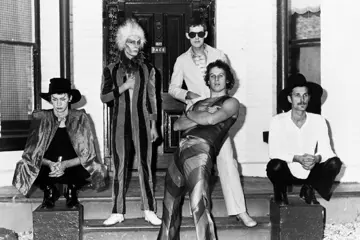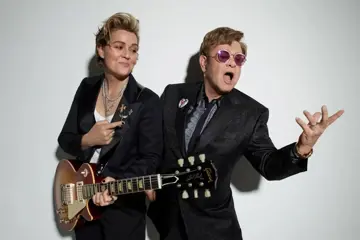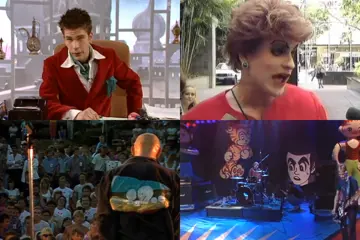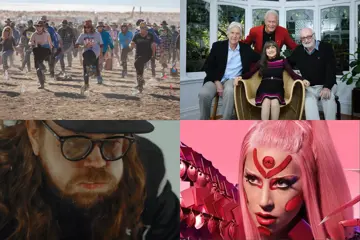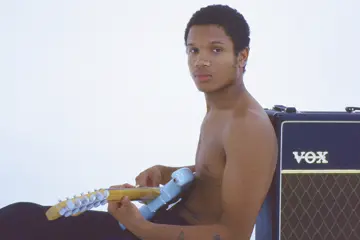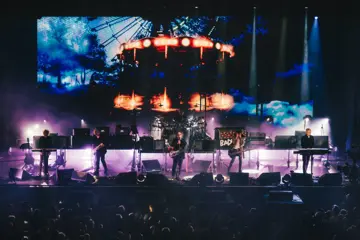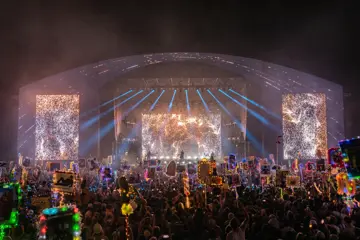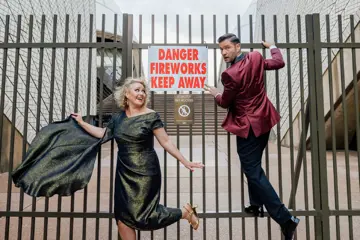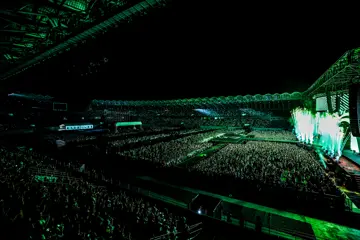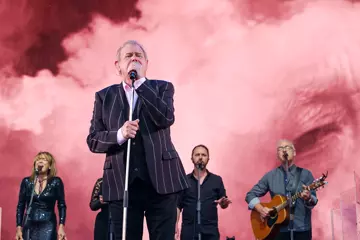Following two years of no live music, discussions in music circles surrounding crowd behaviour are shifting rapidly. Many cases of poor crowd behaviour have been popping up across social media at the concert level, with artists now, more than ever voicing their opinions on how crowds should behave at shows and interact with artists at shows.
Poor crowd behaviour is far from a new ideal, with the discussion being consistent, important and critical throughout the history of live music. Dance floors, artistry and live music is inherently political at its core, however with the visibility of these discussions being at its highest, it's a more important time than ever to discuss the shifting politics of concert spaces.
Most recently, Tyler, The Creator spoke to his audience about throwing items onto the stage. Currently touring the US, the rapper took some time out of his show to criticise his fans for throwing a shoe onto the stage. “I don’t understand the logic of throwing your shit up here,” Tyler said during the show.
Get em T @tylerthecreator https://t.co/iRAjQg2bVH pic.twitter.com/mAZTPAarJn
— Red (@bra6dan) March 29, 2022
“Not only for safety reasons, but bro I don’t want your shit - I don’t want it. I’m not even being funny, every show someone throws something up here and I don’t understand the logic. Why do you think I want your shit? Then if I slip and break my foot… stop throwing your fucking shit up here, bro. Now you look stupid; now everyone around you is looking at you like you’re a fucking idiot.”
Don't miss a beat with our FREE daily newsletter
On a more serious note, Clairo fans have been put under fire sexualising her and crossing explicit boundaries at shows. In March of this year, videos emerged of her performing her highly emotive and personal track Blouse taken from her 2021, highly acclaimed record, Sling. The track reflects on the feeling of being objectified and sexualised when surrounded by men and writing music with men in the music industry. A multitude of videos went viral of her performing the track and during its guitar breaks people screaming out (above the volume of the music) “You’re hot”, and other phrases of similar sentiment. Without speaking for the artist, it’s easy to see the un comfort the comments made her.
Another high profile case of poor crowd behaviour comes from Mitski, who respectfully and publicly asked fans to not record at her shows for her comfort, was met with a range of controversy. The simple request on Twitter, read as, “I wanted to speak with you about phones at shows. … Sometimes when I see people filming entire songs or whole sets, it makes me feel as though we are not here together.”
“Live music offers the feeling of connection, of sharing a dream, and remembering that we have a brief miraculous moment of being alive at the same time. When people watch through phone screens, it makes me feel as though those of us on stage are being taken from and consumed as content.”
Rather than a respectful obligation from fans, what ensued was controversy. While some criticisms were entirely valid, what she asked of her fans was simply for them to respect her comfort and privacy. Mitski famously does not heavily engage on social media, for the reason that she was commodified by fans. Traits of fandom and standom often lead heavily into the world that fans have a right of access to artists, and that artists are products that they have a right to consume.
This neatly leads into the resulting conversation, why is the discussion of fan behaviour so prevalent now, when these issues have riddled live music forever. There are a multitude of reasons, but the first being that this is a deeply overdue conversation on the politics of live music crowds. The internet and the wokeness “era” in which we live in (which I’d argue is objectively for the best) is finally being pushing these discussions to the forefront of the live music zeitgeist. Crowds, individuals and artists are being provided a platform to finally discuss their safety at events and it is not more important than now to eradicate poor behaviour from fans. Both for the safety of artists, but also fellow dance floor members.
The main issue at play currently is the deep commodification and dehumanisation of artists. The digital era in which we live gives every fan a direct point of access to an artist. No longer do we engage with artists and music through a CD, a streaming service, a magazine cover or a live show, they are constantly embedded into the minds of fans as demi-god like figures, which fans have extremely close access to. What results is fans claiming ownership over the artists movements and behaviours. This extremely unique relationship simmers to the surface at shows, as fans seek to capture their personal moments with the artist, whether taking an invasive video, shouting an uncomfortable comment, or delivering a package to them on stage.
The lines between artist and fan are more blurred than ever and the result is a power relationship that often becomes toxic. Many fans see the value of a live show as an opportunity to capture the viral moment, to catch the viral video, or to foster their own selfish relationship with an artist, for better or worse.
Poor fan behaviour is a constant work in progress in music circles, to ensure that live music spaces are accessible, safe and comfortable for all involved.
We are aware that this article simply addresses crowd behaviour in relation to artists. Crowd behaviour and safety amongst themselves and other fans will be a topic of further discussion in a separate piece.


